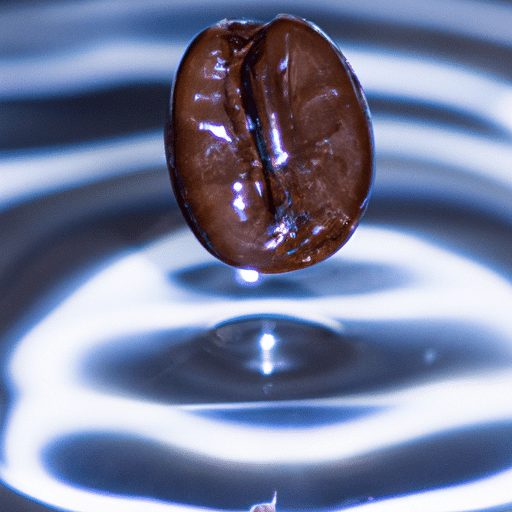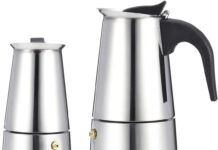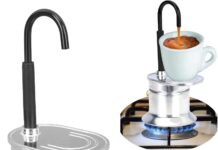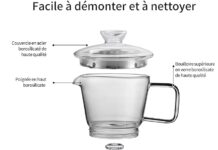We all know that feeling when we eagerly pour ourselves a cup of coffee, only to take that first sip and realize it’s disappointingly weak. Don’t worry, we’ve got you covered! In this article, we’ll share some simple yet effective tips on how to fix weak coffee from a coffee maker. Whether you’re a coffee aficionado who loves a bold and robust flavor or just in need of that extra kick in the morning, we’ve got some tricks up our sleeves that will transform your lackluster brew into a rich and satisfying cup of Joe. So grab your coffee mug, and let’s dive right in!
Possible causes of weak coffee
Improper coffee-to-water ratio
One of the most common causes of weak coffee is an improper coffee-to-water ratio. If there is too much water compared to the amount of coffee grounds, the resulting brew will be weak and lacking in flavor. On the other hand, using too much coffee for the amount of water can result in an overpowering and bitter taste. Finding the right balance is crucial for a flavorful cup of coffee.
Using old or stale coffee beans
Another factor that can contribute to weak coffee is using old or stale coffee beans. Over time, coffee beans lose their freshness and flavor. If you’ve been using the same bag of coffee for months, it’s likely that the beans have lost their potency. To ensure a strong and flavorful cup of coffee, it’s important to use fresh and high-quality beans.
Inadequate brewing time
Brewing time also plays a significant role in the strength of your coffee. If the brewing time is too short, the water may not have enough contact with the coffee grounds to extract the desired flavors and strength. On the other hand, brewing for too long can result in over-extraction and a bitter taste. Finding the optimal brewing time for your taste preferences is important for a well-balanced cup of coffee.
Water not at optimal temperature
The temperature of the water used for brewing coffee is crucial in extracting the flavors from the coffee grounds. Water that is too hot can lead to over-extraction and a burnt taste, while water that is too cold may not fully extract the desired flavors. It’s important to ensure that the water temperature is within the optimal range recommended for your coffee maker.
Methods to fix weak coffee
Adjusting the coffee-to-water ratio
To fix weak coffee caused by an improper coffee-to-water ratio, you can experiment with adjusting the ratio. If your coffee is weak, try increasing the amount of coffee grounds for the same amount of water. On the other hand, if your coffee is too strong, you can decrease the amount of coffee grounds. By finding the right balance and ratio, you can achieve a more flavorful cup of coffee.
Choosing fresh and high-quality coffee beans
To address the issue of weak coffee caused by using old or stale coffee beans, it’s important to choose fresh and high-quality beans. Check the roast date or expiry date on the package to ensure that the beans are fresh. Consider purchasing beans from specialty coffee shops or local roasters, as they often offer a wider variety of freshly roasted beans. Exploring different flavors and origins can also enhance the overall taste of your coffee.
Extending the brewing time
If inadequate brewing time is the reason behind weak coffee, you can try extending the brewing time. This can be done by adjusting the settings on your coffee maker or manually brewing methods such as pour-over or French press. Increasing the contact time between water and coffee grounds allows for better extraction of flavors, resulting in a stronger cup of coffee. However, be mindful not to overdo it as extended brewing time can lead to bitterness.
Ensuring optimal water temperature
To fix weak coffee caused by water not being at the optimal temperature, it’s important to carefully monitor and adjust the water temperature during brewing. Check the recommended temperature range provided by your coffee maker’s instructions or the coffee brand’s recommendations. Preheating the water before brewing can help ensure that it reaches the desired temperature. Using a thermometer for accuracy can also be helpful in achieving optimal water temperature.
Improper coffee-to-water ratio
Determining the ideal coffee-to-water ratio
Determining the ideal coffee-to-water ratio depends on personal taste preferences. It’s recommended to start with a standard ratio of 1:16, which means 1 part coffee to 16 parts water. From there, you can adjust the ratio based on your desired strength. If your coffee is weak, try using more coffee grounds, while if it’s too strong, decrease the amount of coffee and increase the water.
Increasing the amount of coffee
If your coffee comes out weak, try increasing the amount of coffee grounds. Gradually add more coffee until you achieve the desired strength. This method allows for more extraction and flavor, resulting in a stronger cup of coffee.
Decreasing the amount of water
Similarly, decreasing the amount of water can help fix weak coffee. By using less water, the coffee grounds have a higher concentration of water, leading to a stronger and more flavorful brew. Experiment with reducing the water incrementally until you achieve the desired strength.
Using old or stale coffee beans
Identifying the freshness of coffee beans
To identify the freshness of coffee beans, check the roast date or expiry date on the package. Coffee beans are at their peak freshness within a few weeks of being roasted. If the roast date is too far in the past, the beans may have lost much of their flavor. Expired coffee beans can also result in weak and lackluster coffee.
Purchasing freshly roasted beans
To ensure the freshness of your coffee beans, consider purchasing them from specialty coffee shops or local roasters. These places often source their beans in small batches, ensuring that you’re getting freshly roasted coffee. Additionally, they may provide information about the roast date and offer advice on which beans are best for your preferred taste profile.
Proper storage of coffee beans
Properly storing your coffee beans can help maintain their freshness. It’s important to keep them away from moisture, light, heat, and oxygen. Store your beans in an airtight container in a cool and dark place, such as a pantry or cupboard. Avoid storing them in the refrigerator or freezer, as the constant temperature changes can affect the quality of the beans.
Inadequate brewing time
Understanding the recommended brewing time
Understanding the recommended brewing time is crucial to achieving a well-balanced cup of coffee. Different brewing methods have varying optimal time ranges. For example, pour-over coffee typically requires a brewing time between 2 to 4 minutes, while espresso brewing may only take around 25 to 30 seconds. Familiarize yourself with the recommended brewing time for your specific method to avoid weak coffee.
Extending the brewing time
If your coffee is weak because of inadequate brewing time, try extending the duration of the brewing process. This can be done by adjusting the settings on your coffee maker or manually controlling the brewing time for alternate brewing methods. Allowing the coffee grounds more time to steep in the water increases the extraction of flavors, resulting in a stronger brew.
Avoiding rushing the brewing process
Rushing the brewing process can often lead to weak coffee. Avoid the temptation to hurry through the process, as it doesn’t allow enough time for the water to fully interact with the coffee grounds. Take your time, follow the recommended brewing time, and allow the flavors to develop properly. Patience and attention to detail can make a significant difference in the strength and taste of your coffee.
Water not at optimal temperature
Checking the water temperature
Checking the water temperature is crucial to ensure optimal extraction of flavors from the coffee grounds. Most coffee makers have a built-in heating mechanism that maintains the water temperature within a specific range. However, it’s always a good idea to verify if the water temperature matches the recommended range for your specific coffee maker. Many coffee experts recommend a range of 195 to 205 degrees Fahrenheit for ideal extraction.
Adjusting the water temperature
If the water temperature is not within the optimal range, you can make adjustments to achieve the desired temperature. If the water is too hot, let it cool down for a short while before brewing. On the other hand, if the water is too cold, consider preheating it or adjusting the settings on your coffee maker to increase the temperature. Small adjustments can help you achieve the right water temperature for a well-brewed cup of coffee.
Avoiding overheating or underheating the water
While adjusting the water temperature is important, it’s equally crucial to avoid extremes. Overheating the water can result in over-extraction and a burnt taste, while underheating the water may not extract enough flavors. Aim for the recommended temperature range and avoid excessive temperature fluctuations during the brewing process to ensure optimal extraction and the desired strength of your coffee.
Adjusting the coffee-to-water ratio
Experimenting with different ratios
Adjusting the coffee-to-water ratio is a great way to customize the strength of your coffee to suit your personal taste preferences. Experiment with different ratios, starting from the standard 1:16 ratio. Gradually increase or decrease the amount of coffee or water until you achieve the desired strength and flavor.
Using a coffee scale or measuring scoop
Using a coffee scale or measuring scoop can help ensure accuracy in measuring the coffee-to-water ratio. This way, you can consistently reproduce the desired strength of your coffee. A coffee scale allows you to measure the weight of the coffee grounds precisely, while a measuring scoop helps you measure the volume of coffee and water accurately.
Finding the balance for your personal taste
Remember that the ideal coffee-to-water ratio ultimately depends on your personal taste preferences. Some people prefer a stronger and more intense flavor, while others prefer a milder and smoother taste. Experiment with different ratios, brewing methods, and coffee beans until you find the perfect balance that suits your palate. Enjoy the journey of discovering your ideal cup of coffee.
Choosing fresh and high-quality coffee beans
Checking the roast date or expiry date
To ensure the freshness of your coffee beans, check the roast date or expiry date on the package. Coffee beans are usually at their best within two to four weeks of being roasted. Avoid using beans that have exceeded this timeframe, as they may lose their flavor and result in weak coffee. Expiry dates are also important to consider, as expired coffee beans will not produce the desired taste and strength.
Considering specialty coffee or local roasters
For a more flavorful and robust cup of coffee, consider exploring specialty coffee or local roasters. These establishments often offer a wide range of coffee beans with unique flavor profiles. By choosing beans from these sources, you can be assured of their freshness and the dedication of the roasters in creating exceptional coffee. Specialty coffee often comes from small-scale farmers, promoting sustainability and supporting local communities.
Exploring different flavors and origins
One of the joys of being a coffee lover is exploring the vast array of flavors and origins available. Experiment with different coffee beans from various regions such as Africa, South America, or Asia. Different regions offer distinct flavor characteristics, ranging from fruity and floral to nutty and chocolatey. By exploring different flavors and origins, you’ll add depth and complexity to your coffee, making it less likely to taste weak.
Extending the brewing time
Increasing the contact time between water and coffee
To extract more flavors and strength from your coffee beans, you can increase the contact time between the water and coffee grounds. This can be achieved by using brewing methods such as French press or cold brew that allow for longer steeping times. The extended contact time enables greater extraction, resulting in a stronger and more flavorful cup of coffee.
Using a longer brew cycle or steeping time
For coffee makers with adjustable settings, consider using a longer brew cycle or extending the steeping time. This can be particularly effective for automatic drip coffee makers or pour-over methods. Increasing the brewing time allows the water to interact with the coffee grounds for a longer duration, leading to enhanced extraction and a stronger brew.
Testing the strength during brewing
To ensure that your coffee reaches the desired strength, it can be helpful to test the strength during the brewing process. Pause the brewing cycle or pour a small amount of coffee into a cup to gauge the strength. If the coffee is weak, you have the option to let it brew for a little longer to extract more flavors. Continuously monitoring the strength allows you to achieve the desired intensity in your cup of coffee.
Ensuring optimal water temperature
Verifying the temperature range recommended by the coffee maker
Different coffee makers have specific temperature ranges recommended for optimal brewing. It’s important to familiarize yourself with the temperature range suggested by your coffee maker’s instructions or the coffee brand’s recommendations. This ensures that the extraction of flavors from the coffee grounds is maximized, resulting in a stronger and more flavorful cup of coffee.
Preheating the water before brewing
To ensure that the water reaches the optimal temperature during brewing, it can be helpful to preheat the water. Boil the water separately and let it cool down for a short while before pouring it into the coffee maker. This additional step can help ensure that the water temperature is within the recommended range for better extraction and a stronger cup of coffee.
Using a thermometer for accuracy
For those seeking precise control over the water temperature, using a thermometer can be beneficial. By measuring the temperature of the water before brewing, you can adjust and fine-tune the temperature to match the recommended range. This level of accuracy ensures that the coffee grounds are properly extracted, resulting in a more satisfying cup of coffee.
In conclusion, weak coffee can be easily fixed by addressing several possible causes. The coffee-to-water ratio, freshness of coffee beans, brewing time, and water temperature all play significant roles in determining the strength and flavor of your coffee. By adjusting these factors and experimenting with different techniques, you can enjoy a stronger and more satisfying cup of coffee. Remember to find the balance that suits your taste preferences and enjoy the journey of discovering your perfect cup of joe.





































